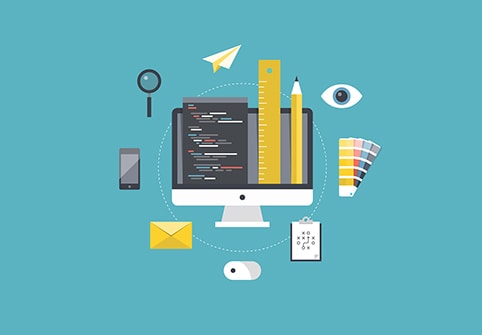Embedded Formative Assessment: Tests without Stress

Feedback is power. This is something that is often lost in the discussion about testing our students. When students know their strengths and weaknesses, when they know what they have mastered and what they have still to learn, then control over their learning is in their own hands.
I recall being in school and getting back tests with lower grades than I had hoped. I would be perplexed, not understanding what I did wrong or what I needed to know. The class would move on, I would never return to that material, and I would be at a disadvantage with the new work. What if I could have spent the time I needed on that part of the curriculum, what if I got immediate feedback on what I was doing wrong, what if I had the opportunity to improve?
Even better, what if I could see and use that information without having to stop my learning to take a test? What if every student could? This is the promise of formative embedded assessment.
The “formative” refers to checking in for understanding frequently rather than waiting until the end of the semester for high stakes testing and using the results to tailor instruction. The “embedded” refers to not stopping to take a test, but being able to see how students are doing as they do their work. The “assessment” points out that we are not just talking about tests, but any way to figure out how students are doing, be it by observation or conversation or co-problem solving or any other method.
There is a vision that someday technology will be able to be very helpful in providing formative embedded assessment. Imagine if rather than moving on after every math test, I would be doing my math on a computer, with some sort of easy natural math interface, and the computer would realize I kept making the same errors and use that pattern to point me towards what I needed to understand better. We are very, very far from that vision of technology independently providing sophisticated feedback in most areas, though software is great at providing immediate simple feedback already. Fortunately, this is more than enough to build on. On progress, Tom Vander Ark said:
The best product development work in formative assessment has been progress in products that combine adaptive assessment with targeted tutoring. The K-12 assessment in i-Ready from Curriculum Associates comes with K-8 instructional units in math and reading. Dreambox Learning covers K-8 math.
Teachers can support students with formative embedded assessment already – with or without technology. In my interview with Lee Ann Tysseling of Boise State University, I found out how. Below is my paraphrased summary of her comments, but please check out this playlist for the full discussion.
What is embedded, formative assessment?
Embedded formative assessment captures data during authentic classroom learning activities such as projects, small group activities, inquiry projects, and so on. It doesn’t intrude into classroom life and students don’t feel as though they are being assessed and teachers capture good data – the kind that matters in the long run.
The purpose is to use the data in making instructional decisions either on a group or an individual basis.
Why is it important to have in the classroom?
With formative embedded assessment, teachers and students feel that they themselves are the ones looking for the signs that they are learning the skills they need to learn. They are not being judged, rather they are finding information that will help students learn better. The focus is on learning, not reporting to outside agencies that are focused on evaluating schools.
How does it support intrinsic motivation and ownership?
At its best kids set their own learning goals, they identify elements of their own learning that they want to work on and they learn to self-monitor and judge. This can be very tricky for a teacher who now needs to learn to maintain a hands-off approach: as soon as formative assessment starts being used for grading or the district uses it to evaluate students it loses the purpose of non-judgmental feedback to improve learning.
What does it look like in practice?
In her practice, Dr. Tysseling has used a number of formative assessments.
In working with young readers, she has a form to easily mark what they have captured from their reading based on their re-telling of the story. As the student talks, she is able to mark down a tally mark for each element they need to master. She also uses it with older students when they talk about what they just read in a history assignment, for example. This is a simple non-technological form of formative embedded assessment.
Using technology, Tysseling has used student response systems such as Nearpod to check for student understanding. She gives them a challenging problem and asks them to respond in real time and then uses that information to focus her ongoing teaching.
What are concerns about the use of formative assessments?
There is too much emphasis on high stakes summative assessment that meets the interest of external stakeholders as opposed to formative assessment that meets the needs of learners and teachers.
There is also a risk of going too far – of seeing the numbers and data instead of the child. This can lead to the child’s real needs being missed as their performance is rated on a checklist of statistics.
For more check out:
- Formative Assessment: Progress, Barriers and Opportunity
- From Formative Assessment to Tracking Student Mastery: The Road to Competency-Based Instruction
- Formative Assessment To Initiate Personalized Learning
Stay in-the-know with all things EdTech and innovations in learning by signing up to receive the weekly Smart Update. This post includes mentions of a Getting Smart partner. For a full list of partners, affiliate organizations and all other disclosures please see our Partner page.




Jessie Chuang
Technologies can help in 2 aspects in embedded assessments:
1.Assist the artifact capture and data input (if by teacher observation)
2.Report digital behavior logs and learning evidence in real time, if content and activities are tagged, it can visualize a learner's location on the knowledge map
In the “EdTech Developers’ Guide“(2015) from Office of Educational Technology, US Department of Education, it introduced xAPI as:
When students are learning across multiple technology applications, that information is scattered among many different systems. xAPI is an approach to describe learning data between systems in a uniform way.
xAPI helps collect experiences from online learning activities (such as watching a video or completing a quiz). These data can then be used to help other learning systems give students a more personalized experience, as well as help a teacher understand a student’s unique needs based on his or her activity across multiple learning tools. Because xAPI is simply a protocol to describe learning actions (John watched a video, Kelly completed a quiz, etc.), any type of learning experience can be placed into this format. This means that it could be used to account for more social and emotional skill sets (resilience, perseverance, etc.), which is a potentially big improvement over a reliance on hard outcome data in most digital systems.
In digital learning age, if we fully utilize digital records as data-enriched assessment for learning (for example, John watched video V on platform A from timeline t1 to t2 twice, and then he answered quiz items Q on platform B, taking 2 min. 15 sec. with a hint revealed, and then… all process records put together), the assessment isn’t separated from learning(means no time wasted) and it’s in stealth mode(non-invasive). It can give instructors and learners immediate, continuous and multifaceted feedback. The sample size is all, this means no speculation is involved.
http://classroom-aid.com/2016/02/01/what-can-edtech-business-learn-from-uber-xapi/